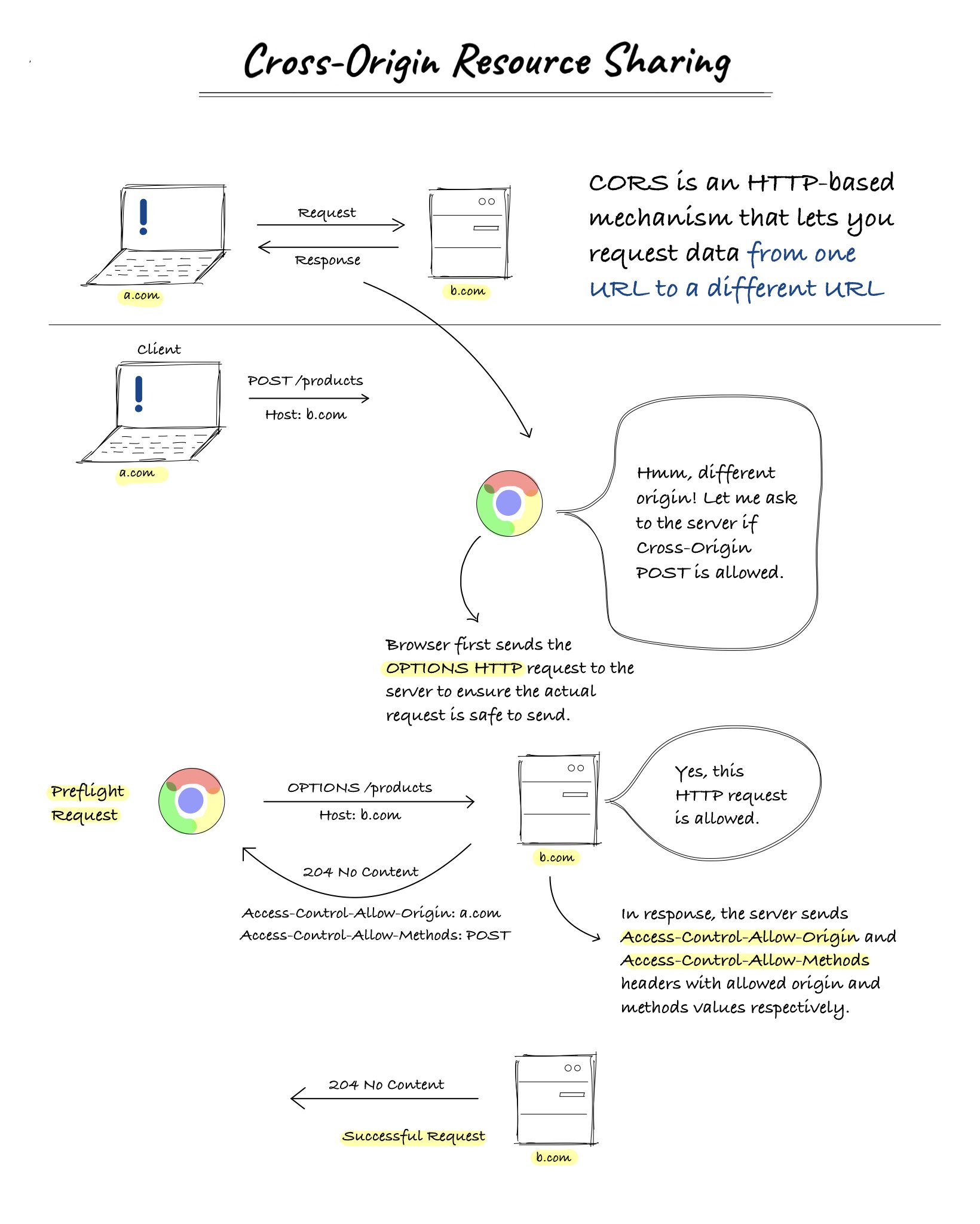Definitions of Most Widely Used Terms in API Development
- SDK
- RPC
- CORS
- API Key
- Async API
- Internal API
- API Caching
- External API
- HTTP cookies
- Authorization
- Microservices
- OpenAPI spec
- Composite API
- API Versioning
- Authentication
SDK
SDK stands for Software Development Kit.
It is a set of development tools that allows the creation of software or an application for a particular platform.
SDK provides you with the whole package from compilers to debuggers to even a software development framework.
RPC
Remote Procedure Call (RPC) is the oldest client-server communication method in use today.
Instead of the traditional HTTP call, RPC uses a function call.
It means that you invoke a function written on the server-side code on the client-side.
CORS
CORS is an HTTP-based mechanism that lets you request data from one URL to a different URL.
For more information, see the following article: Understanding CORS.
API Key
To make API requests, you need an API key to establish a communication path between software.
The length of an API key could be anything. The only rule is that these keys must be unique and not easy to guess.
Async API
AsyncAPI is an open-source project aimed at improving the current state of Event-Driven Architecture.
These APIs allow relatively time-consuming requests to be processed in the background while other requests are made.
Internal API
Internal API, also known as Private API is only accessible to the developers within an organization.
API Caching
API Caching is the ability to store copies of frequently accessed data in several places along the request-response path.
External API
External API, also known as Public API is accessible to all the developers outside the enterprise or organization.
HTTP cookies
An HTTP cookie is a small piece of data created by the web server inside your browser.
The data inside a cookie has an ID that is unique to you and your computer. This ID helps the server to know who the user is so it can send the data accordingly.
Authorization
Authorization always comes after authentication. It is the process of permitting users to access different resources from the server, and it’s not visible and changeable by the user.
## Microservices
A microservice is an application design that breaks up a monolithic architecture into small, self-containing services.
OpenAPI spec
It is a format to define structure and syntax for REST APIs.
It provides a standard that allows both humans and computers to discover and understand the service’s capabilities without access to source code, documentation, or traffic inspection.
Composite API
Composite API is a design approach in which we bundle multiple API requests into a single API call.
API Versioning
API versioning is the practice of managing changes in your API.
You should version your API if you are introducing any breaking changes.
This way, clients can still access the old version, and their products won’t break as soon as you launch a new release.
Authentication
Authentication and authorization are the two most confusing terms.
Authentication is validating the user to identify if they are who they claim to be.
Ref: https://twitter.com/Rapid_API/status/1502337105246175238
